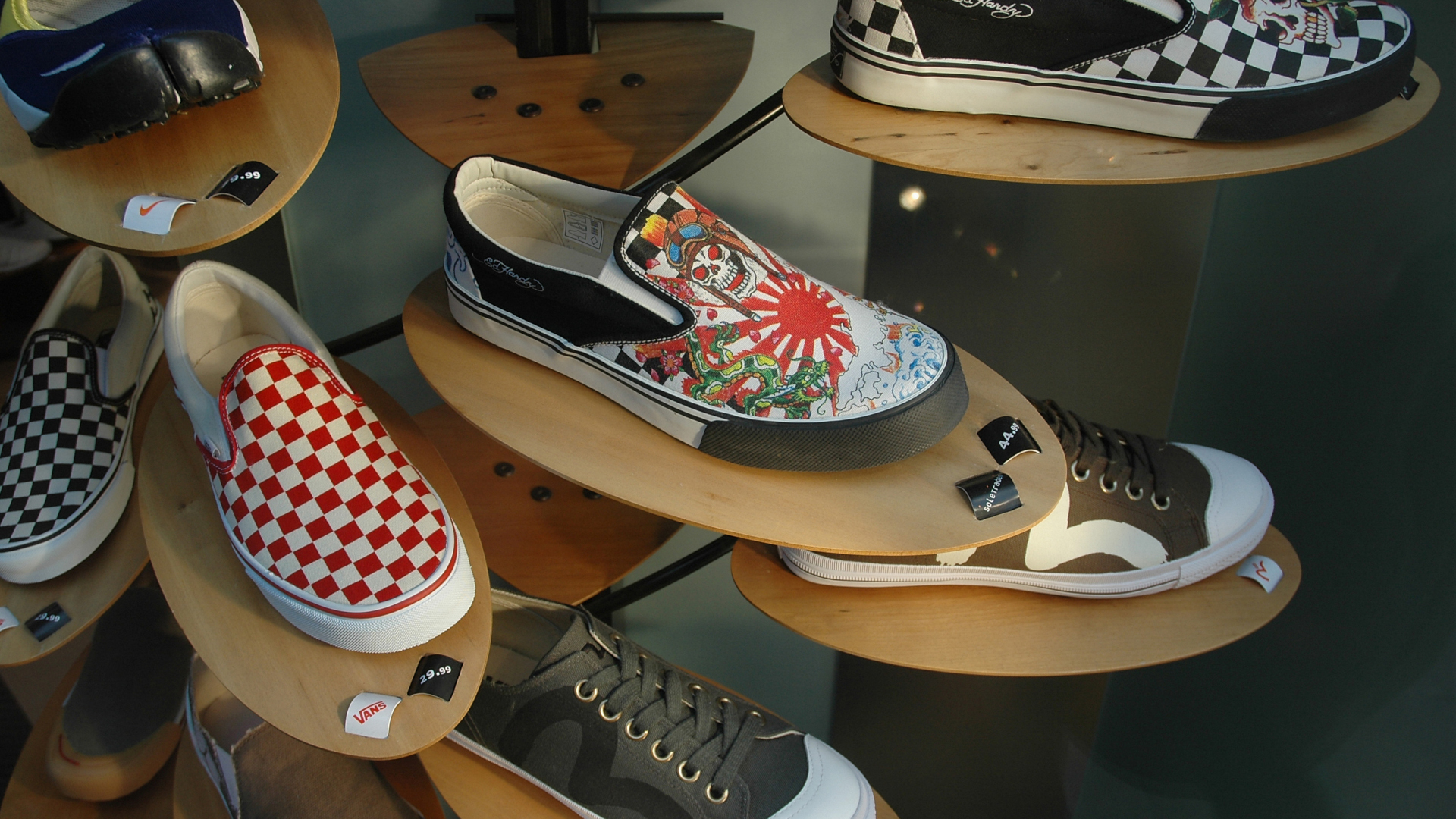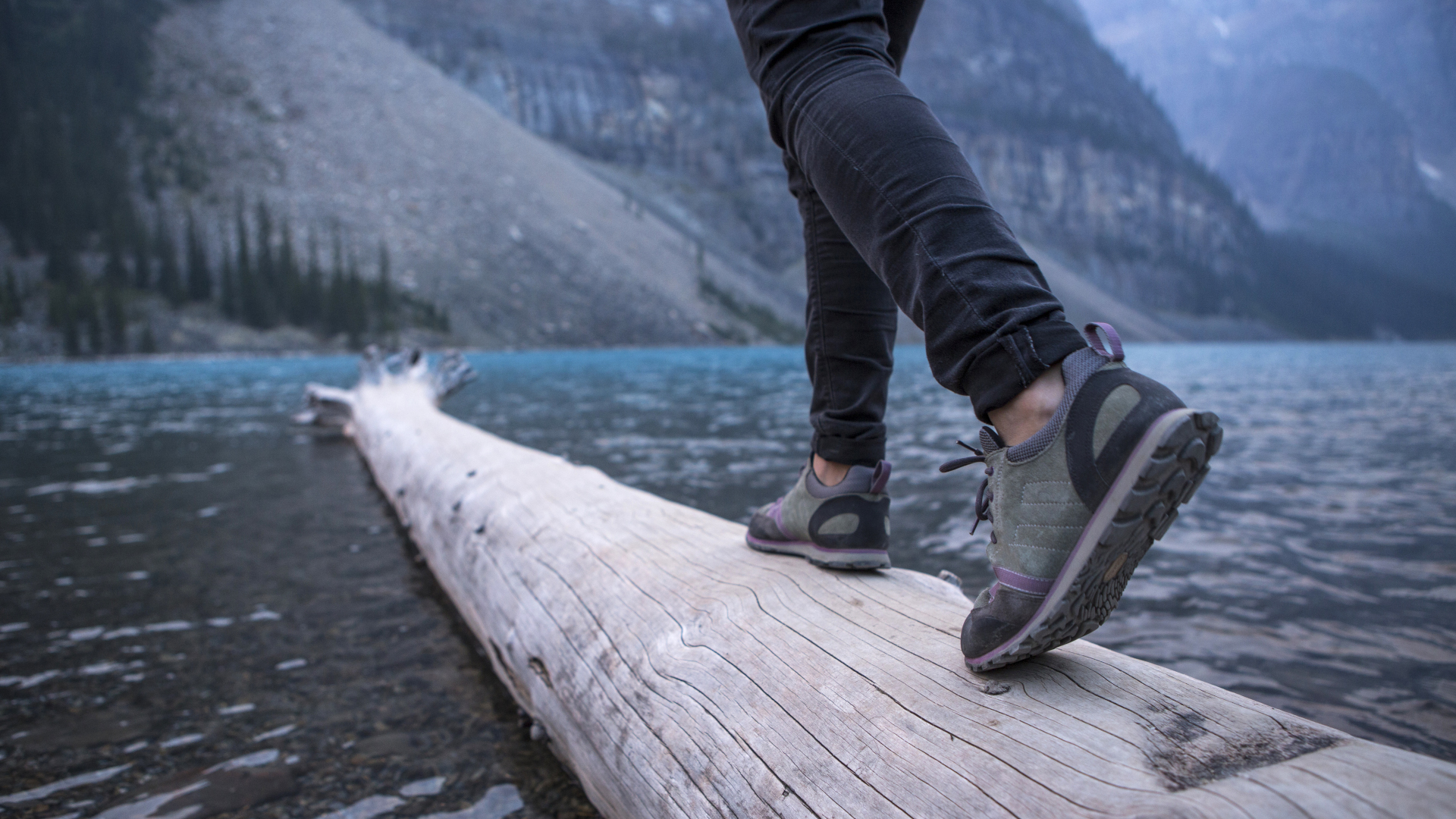Can you go hiking in Vans shoes?
Can you go hiking in Vans shoes? Why we might have to call the hiking police on you if we see you wearing the popular sneakers on the trails

We’ve discussed hiking in Doc Martens and whether or not you can walk long distances in wellies, but can you go hiking in Vans shoes? The blueprint for these iconic shoes was created in Anaheim in the 1960s and the sticky soles have been favored by skateboarders for generations, and fashion-forward folks for years, However, in this article, we explain why we might have to call the hiking police on you if we see you on the trails wearing skate shoes.
Can I wear Vans for hiking?

Assuming we’re talking about classic Vans here, the shoes we’re discussing are usually slip-on canvas shoes with a thick rubber sole and typically have a fun design like black and white checkerboard.
If you own a pair of these Vans shoes, you’re probably pretty cool and possibly wondering if you can wear them on a hike. After all, they’re pretty comfortable for kicking around town in and that one-inch sole looks to have a bit of tread on it. Plus, hiking boots are a big investment and who knows if you will even like hiking?
Sadly, while we’ve been forced to admit you might be able to get away with wearing footwear like Docs on the trail under some circumstances, we really can’t find any good argument for wearing Vans shoes on the trail.

In fact, out of all the criteria for hiking footwear that we hold dear, the only one that Vans fulfill is that they’re kind of lightweight, and even then, when we weighed ours next to several hiking shoes from brands like Danner and Merrell, we found that Vans weigh more.
Vans aren’t waterproof or breathable, they don’t have any arch or ankle support and they don’t have soles like Vibram soles that offer good tread and protection on rocky or slippery surfaces. The canvas material won’t protect your feet if you bash up against a rock and if you wear them for any length of time, you’ll almost definitely end up with blisters and sore feet. So, wearing classic Vans on a hike could result in anything from severe discomfort to safety issues like falling or frostbite, and they're best saved for skateboarding and looking good.
That said, Vans has expanded their range of shoes now and does actually make supportive, waterproof, breathable boots meant for hiking. So, if you’re a diehard Vans fan, go for these and not your slip-ons.
All the latest inspiration, tips and guides to help you plan your next Advnture!
Can I wear regular shoes for hiking?

Lest you think we’re gear snobs, we wanted to answer this question thoughtfully. We don’t necessarily believe you have to shell out enormous amounts of money for hiking gear. But the answer to this question really depends a bit on what you consider regular shoes, and what kind of hiking you’re planning to do.
Let’s just agree that high heels, fashion sandals, loafers and flip flops are always a bad idea for hiking and keep those for going out for dinner and long walks on the beach. As for regular shoes that you probably already own, you may well be able to get away with wearing your sneakers and boots for hiking, especially if you’re not going too far or on particularly treacherous terrain.

For forest walks and easy hikes, if you’re wearing regular shoes, just make sure that they offer some protection both from the elements and sharp rocks on the trail. They absolutely have to have decent grip since you’ll often encounter slick or rocky surfaces on a hike and it’s helpful if they’re made from a breathable material for sweaty feet. You also want to make sure they’re well broken in and don’t rub and you might want to consider boots with ankle support.
If you don’t own a pair of the best hiking shoes or boots and don’t want to shell out before you know how you feel about hiking, we suggest wearing a good pair of sneakers and starting out with trails and weather conditions that aren’t too challenging. Chances are, once you fall in love with hiking you won’t be able to resist getting some decent footwear anyway.
Julia Clarke is a staff writer for Advnture.com and the author of the book Restorative Yoga for Beginners. She loves to explore mountains on foot, bike, skis and belay and then recover on the the yoga mat. Julia graduated with a degree in journalism in 2004 and spent eight years working as a radio presenter in Kansas City, Vermont, Boston and New York City before discovering the joys of the Rocky Mountains. She then detoured west to Colorado and enjoyed 11 years teaching yoga in Vail before returning to her hometown of Glasgow, Scotland in 2020 to focus on family and writing.

